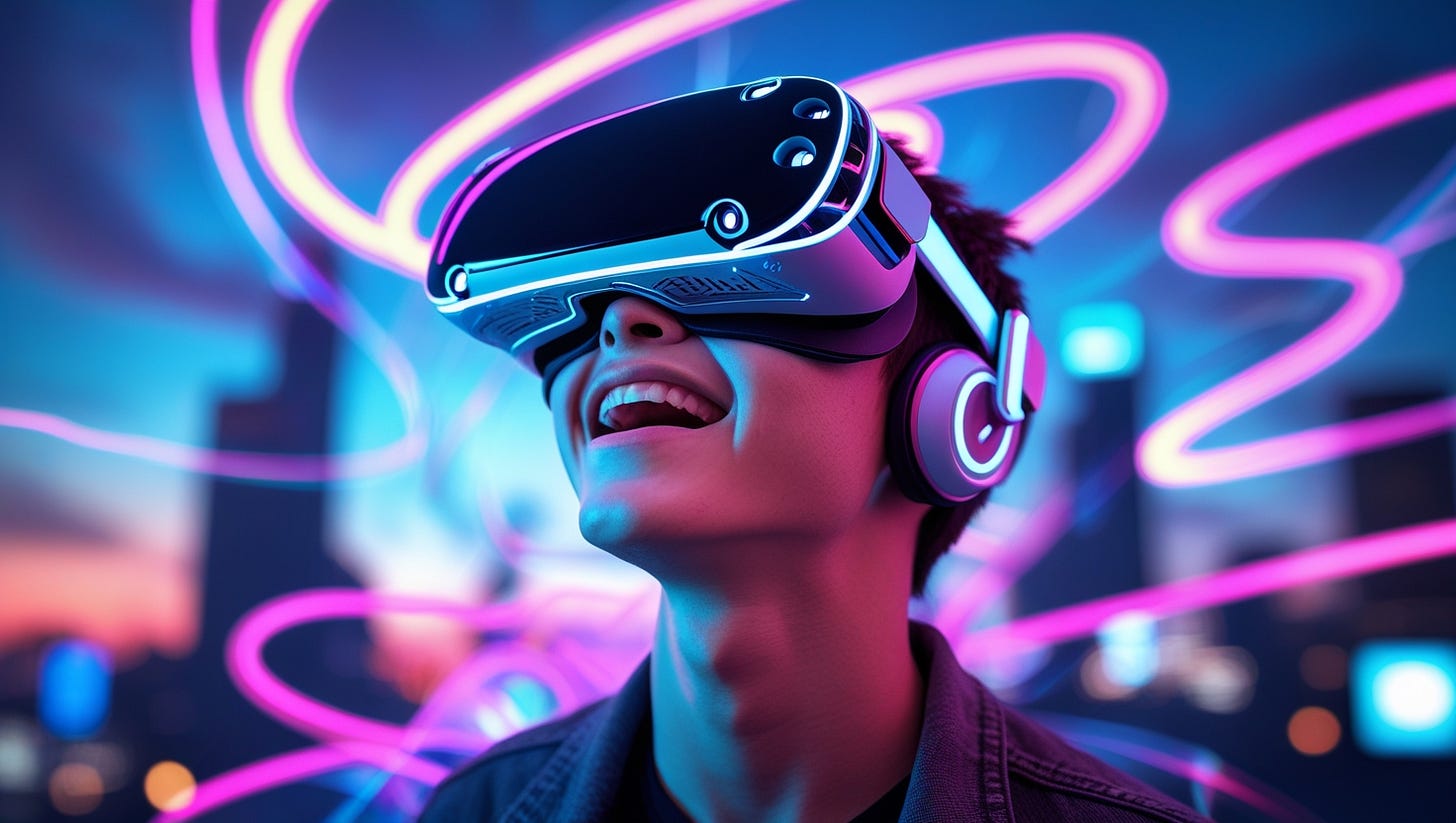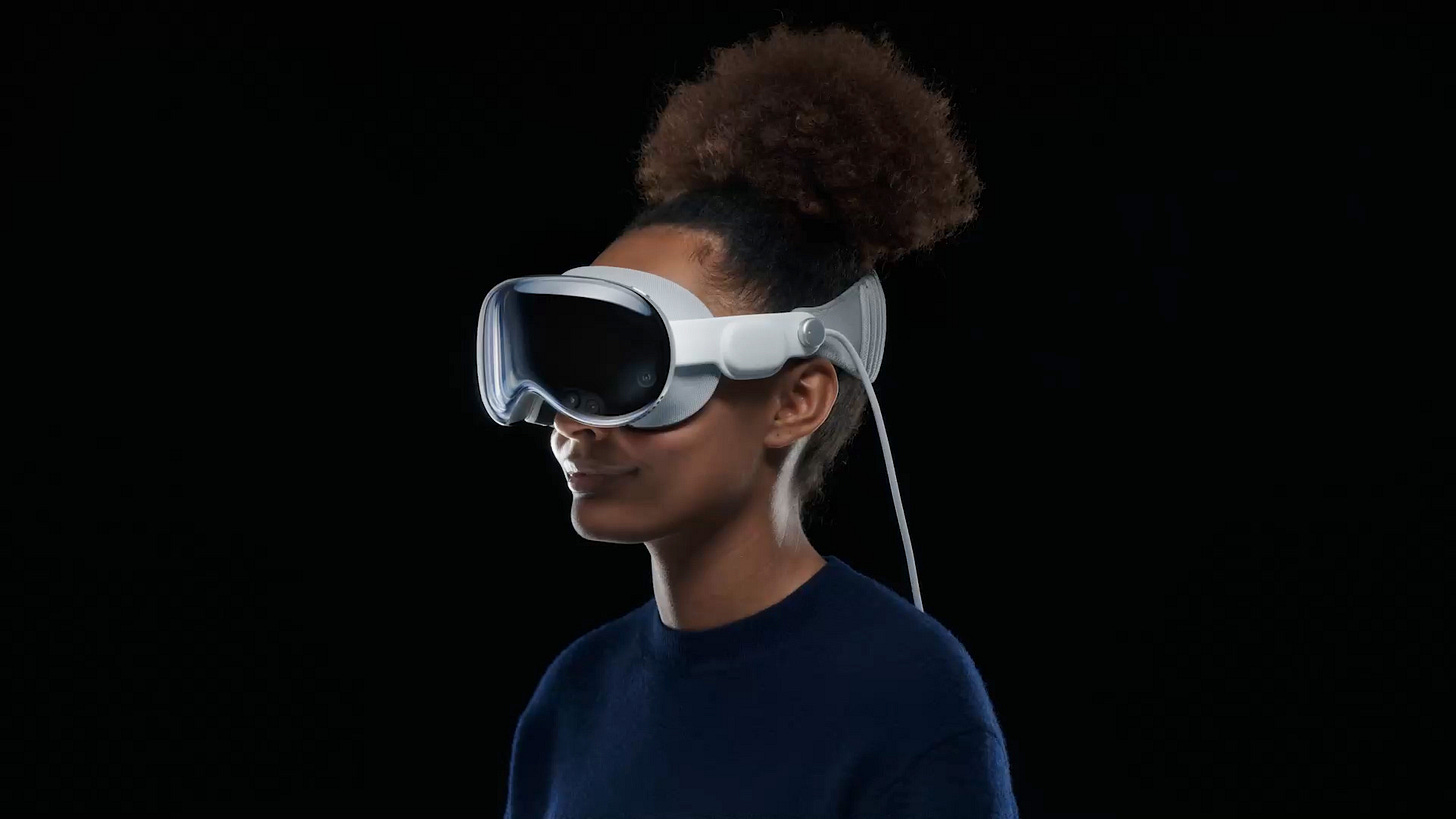The Current State of VR
A Deep Dive into Technology, Adoption, and Future Prospects
Brand Runner is a newsletter talking about creative productivity and how to build stand-out brands. Subscribe to get brand insights straight to your mailbox👇.
This article is inspired by my podcast episode with Sébastien Hameline, who happens to be an immersive production expert. Full episode here:
Virtual Reality stands at a fascinating crossroads in the bustling landscape of emerging technologies. What began as a science fiction concept has evolved into a transformative technology reshaping how we work, learn, and connect. Through insights from VR production specialist Sebastien Hameline and broader industry analysis, we can now paint a comprehensive picture of where VR stands today and where it's heading.
The Journey from Niche to Notable
The year 2015 marked a pivotal moment for VR. Back then, explaining what VR meant was a necessary prelude to any professional conversation. Fast forward to today, and the technology has become familiar enough that the acronym needs no introduction. This shift in public awareness represents more than just marketing success – it signals a fundamental change in how society views immersive technology.
The introduction of the Oculus Go proved to be a watershed moment for the industry. At $200-250, it transformed VR from an enthusiast's toy into a consumer possibility. This democratization of VR technology parallels the early days of personal computing when the transition from specialized equipment to consumer devices sparked a revolution in how we interact with technology.
The Technical Renaissance
The evolution of VR technology tells a story of rapid innovation and persistent challenges. In the early days, creating VR content meant cobbling together solutions with multiple GoPro cameras and hoping for the best. The results were often underwhelming, with poor visual fidelity that failed to deliver on VR's promise of immersion.
By 2016-2017, purpose-built 360-degree camera systems emerged, dramatically improving capture quality. This advancement was crucial – it meant that for the first time, the visual experience could match the ambition of VR creators. The technology progressed from producing blurry, disorienting footage to delivering crystal-clear immersive experiences that could genuinely transport viewers to another place.
The industry has also seen a significant shift in how content is created and consumed. The rise of VR180 3D format represents a more focused approach to immersive content. Rather than trying to capture everything in all directions, creators can concentrate on what's in front of the viewer, resulting in higher-quality experiences. This format has proven particularly effective for live performances and educational content, where maintaining attention to specific elements is crucial.
The Apple Effect: Redefining Social Acceptance
Apple's entry into the market with Vision Pro has catalyzed a remarkable shift in how people perceive and use VR technology. For the first time, we're seeing users confidently wearing headsets in public spaces – on planes, in coffee shops, and even while walking down the street. This represents more than just early adopter enthusiasm; it signals a fundamental change in the social acceptance of immersive technology.
The Vision Pro's innovative features have played a crucial role in this transformation:
Advanced pass-through technology that maintains connection with the physical world;
External displays that show the user's eyes, preserving human connection;
Seamless integration with everyday computing tasks.
This shift has forced other industry players to adapt. Meta's Quest 3 has rapidly evolved to incorporate similar features, leading to an innovation race that benefits consumers. The competition between these tech giants is pushing the boundaries of what's possible in spatial computing.
The Enterprise Frontier
While consumer adoption continues to grow steadily, the enterprise sector has emerged as a powerful driver of VR innovation. Remote work trends accelerated by global events have created new opportunities for VR in professional settings. Companies are discovering that VR can bridge the gap between physical and virtual workspaces in ways that traditional video conferencing cannot match.
Healthcare applications particularly showcase the transformative potential of VR:
Hospitals using VR for surgical planning and training
Mental health professionals employing VR for exposure therapy
Rehabilitation centers utilizing immersive environments for physical therapy
Patients undergoing dialysis using VR to make treatment more bearable
The education sector has also embraced VR's potential. Museums are creating virtual exhibitions that allow visitors to explore historical sites and artifacts in unprecedented detail. Universities are developing VR laboratories that enable students to conduct virtual experiments safely and cost-effectively.
Content: The Next Frontier
The challenge of creating compelling VR content remains a critical industry focus. While hardware capabilities have advanced significantly, the need for engaging, high-quality content has become more pressing. Meta's recent developments in this space, particularly in Music Valley within their Horizon platform, demonstrate the potential for social VR experiences.
Live music has emerged as a particularly promising application. Artists like U2, Muse, and Imagine Dragons have pioneered VR concerts that offer fans new ways to experience live performances. These events go beyond simple recordings, creating interactive experiences that blur the line between physical and virtual attendance.
The Numbers Game
Current market projections tell an interesting story. With VR/AR headset shipments expected to reach 9.7 million units in 2024 and grow to 24.7 million by 20281, the industry is showing steady growth. While these numbers might seem modest compared to the 7.2 billion mobile phone users globally2, they represent a technology still in its early adoption phase.
The younger demographic's embrace of VR platforms like Meta Horizon suggests a future where immersive technology could become as natural as smartphones are today. These users are growing up with VR as part of their digital landscape, potentially setting the stage for broader adoption as they enter the workforce and gain purchasing power.
Looking Ahead: The Next Chapter
The future of VR appears to be converging around several key trends:
Spatial Computing
The industry is moving beyond traditional VR toward a more integrated approach to spatial computing. This shift acknowledges that the future of computing will likely blend virtual and physical realities rather than replacing one with the other.
AI Integration
The integration of artificial intelligence with VR promises to create more responsive and personalized experiences. Meta's recent focus on AI capabilities at their Connect conference suggests this will be a major development area.
Accessibility
The development of more affordable hardware options, like Meta's upcoming Quest 3S, indicates a push toward greater accessibility. This trend, combined with improving user experience design, could help overcome current adoption barriers.
Enterprise Solutions
The growth of VR in professional settings suggests a future where immersive technology becomes an integral part of how we work. From virtual meetings to complex data visualization, VR's role in the workplace continues to expand.
The Road Ahead
For brands and businesses considering VR investment, the key lies in understanding its unique capabilities. Success in VR doesn't come from simply translating existing content into a new format – it requires rethinking how to engage users in three-dimensional space.
The evolution from pure VR to mixed reality and spatial computing points toward a future where immersive technologies become seamlessly integrated into daily life. This transition, combined with ongoing hardware improvements and expanding use cases, suggests we're entering a new phase in computing history.
As we look to the future, it's clear that VR's impact will extend far beyond gaming and entertainment. The technology is maturing into a versatile platform that could fundamentally change how we interact with information, each other, and the world around us. While challenges remain, the foundation for widespread adoption is stronger than ever.
The next few years will likely bring continued innovation in hardware, content creation, and use cases. For those willing to embrace its potential, VR offers unprecedented opportunities to create, connect, and communicate in ways that were previously impossible. The question is no longer if VR will become a mainstream technology, but when and how it will reshape our digital landscape.
More about the topic:
https://digitalproducer.com/idc-forecasts-robust-growth-for-ar-vr-headset-shipments-fueled-by-the-rise-of-mixed-reality/
https://www.idc.com/getdoc.jsp?containerId=prUS51971224
Inspired by the legendary samurai strategy guide by Miyamoto Musashi, I am working on The Five Rings of Marketing. In in this book, I draw parallels between this timeless battle-tested guide and modern marketing mindsets to achieve market supremacy.
Did you find this article insightful? Subscribe here👇
⚡Connect⚡
Thanks for reading!
Connect with me on LinkedIn
Please drop a comment below, let me know your take 👇, and subscribe here.
Listen🎙️ to the Brand Runner podcast on:








